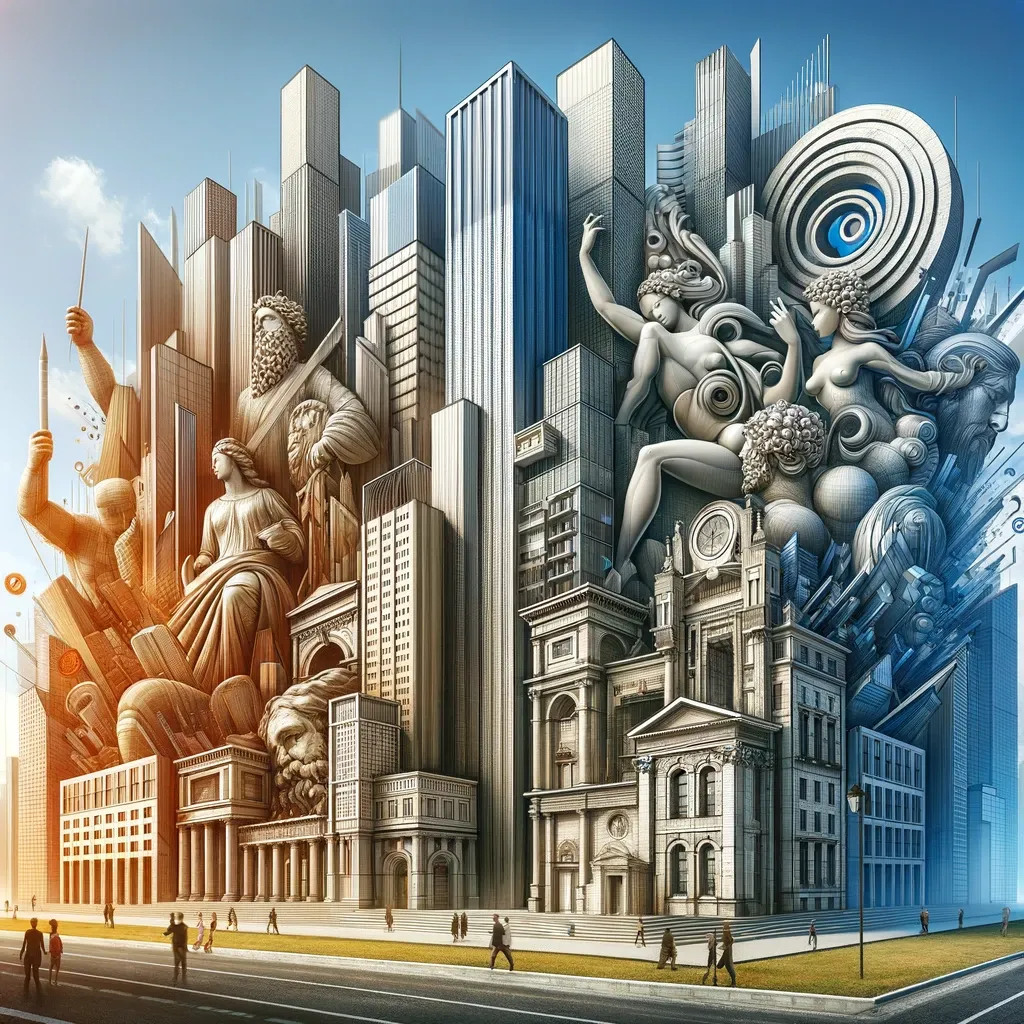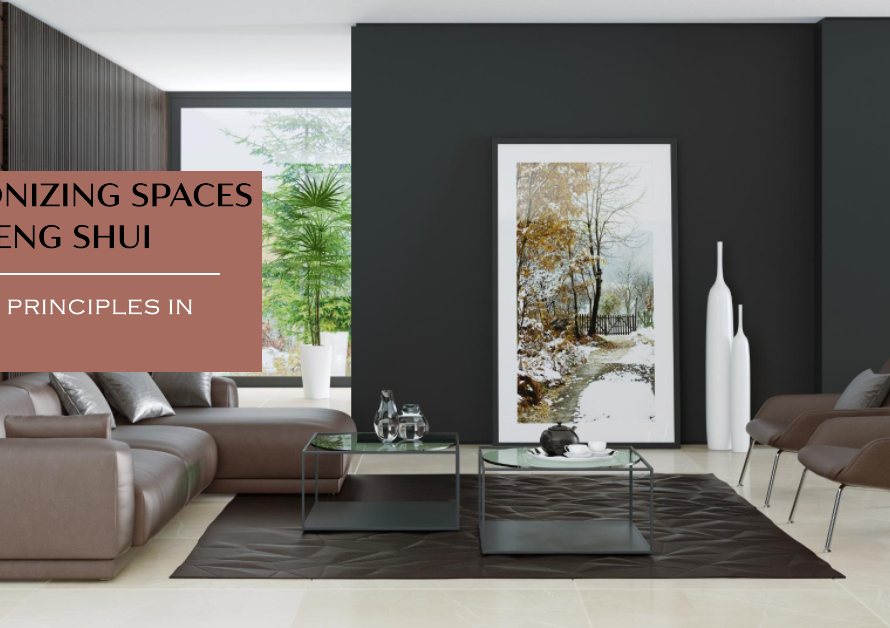
Table of Contents
1. Introduction
The influence of aesthetics in art and architecture is undeniable, as both disciplines are inherently linked by their shared emphasis on beauty, form, and visual appeal. From the intricate patterns on a historic building’s facade to the vibrant paintings adorning its interior, aesthetic elements have the power to evoke emotions and convey meaning. It’s this interplay of visual harmony and creative expression that has enabled artists and architects throughout history to contribute to a rich tapestry of human culture.
In addition to serving as a source of inspiration for one another, art and architecture often borrow from each other’s design principles, textures, and color palettes. This cross-pollination not only enriches each discipline but also fosters a deeper appreciation for the interconnectedness of artistic endeavors. By recognizing how aesthetics transcend traditional boundaries between art forms, we gain a greater understanding of how different modes of expression can coalesce into a unified sensory experience within architectural spaces.
Ultimately, it is this fusion of artistic sensibilities that gives rise to environments which are not just functional but also captivating in their sensory allure. As such, exploring the shared roots of art and architecture unveils an intricate network where aesthetics play an integral role in shaping our physical surroundings while simultaneously offering glimpses into the depths of human creativity.
2. Historical Relationship
In the world of art and architecture, a fundamental connection exists in the relationship between function and form. While architecture serves a practical purpose by providing shelter, artistry comes into play to imbue structures with aesthetic appeal. This juxtaposition gives rise to a delicate balance that elevates buildings from mere utilitarian constructions to works of art. The fusion of function and form allows architects to create spaces that not only serve human needs but also evoke emotional responses, showcasing how artistic expression can elevate the functionality of a structure.
Furthermore, the interplay between function and form in architecture emphasizes the role of creativity in addressing practical challenges. It encourages architects to think beyond mere functionality, fostering innovation and imaginative design solutions that push the boundaries of traditional construction. This prompts us to reconsider our preconceived notions about what constitutes art or architecture, highlighting how these disciplines intersect and influence one another. By exploring this dynamic relationship, we gain a deeper understanding of how artistry can transcend its traditional confines and enrich even the most pragmatic aspects of our built environment.
3. Aesthetic Influence
Cultural context plays a crucial role in shaping art and architecture, as it provides the foundation for the visual language and design principles used in these disciplines. From traditional motifs to contemporary influences, the cultural context infuses meaning and symbolism into creative expressions. Consider the intricate carvings of ancient temples or the vibrant hues of indigenous artwork – they all reflect unique cultural narratives that have been passed down through generations.
Moreover, cultural context influences not only the aesthetic aspects but also the functionality and spatial organization of architectural structures. For instance, building materials, construction techniques, and even building orientations are often influenced by cultural traditions and beliefs. Understanding this connection helps us appreciate how art and architecture serve as vessels for preserving and expressing diverse cultural identities across time and place. In essence, they are reflections of human experiences that transcend geographical boundaries.
4. Function and Form
Collaborative nature is at the heart of both art and architecture, as these disciplines often require the input and expertise of multiple individuals to bring a vision to life. In architecture, this collaboration extends beyond just architects and engineers, involving urban planners, builders, interior designers, and landscape architects. This fusion of talents allows for the creation of spaces that not only function seamlessly but also evoke emotional responses through their design.
Similarly in art, collaboration can take many forms such as artists working together on a mural or sculpture, or even partnering with other experts like engineers or fabricators to realize large-scale installations. These collaborations yield dynamic works that push the boundaries of traditional artistic practice while embracing new technologies and materials. The interplay between different perspectives results in a richer tapestry of ideas that reflect diverse experiences and worldviews.
This focus on collaborative nature within both art and architecture highlights the ability of creative endeavors to transcend individual limitations by fostering synergy among talented individuals. It speaks to the power of collective effort in manifesting ambitious visions into tangible expressions of human creativity.
5. Cultural Context
In conclusion, the connection between art and architecture is a deeply intertwined one that has evolved over centuries. The fusion of these two forms of expression has resulted in some of the world’s most breathtaking buildings and monuments, each serving as a testament to the power of creative synergy. From ancient masterpieces like the Parthenon to modern marvels like the Guggenheim Museum, we see how artists and architects have woven together their respective disciplines to create immersive experiences that transcend mere utility.
Moreover, this symbiotic relationship continues to shape our cities and landscapes today, as contemporary designers seek to imbue their structures with a sense of narrative and emotion. In essence, art informs architecture by bringing beauty and meaning into constructed spaces, while architecture provides a canvas for artistic exploration on an unprecedented scale. As we move forward into an era defined by innovation and sustainability, it is crucial for us to recognize and celebrate this interconnectedness between art and architecture as key contributors to our shared human experience.
6. Collaborative Nature
The collaborative nature inherent in both art and architecture is a testament to the synergy between these two disciplines. Artists and architects often share a mutual appreciation for creativity, problem-solving, and expression, leading them to collaborate on projects that push the boundaries of traditional design. The intersection of artistry and architectural innovation can be seen in the construction of public spaces, where artists are brought on board to infuse personalized elements into architectural structures. This collaboration not only enhances the aesthetic appeal of buildings but also creates dynamic environments that inspire awe and foster a sense of community.
Moreover, the collaborative process between artists and architects promotes interdisciplinary exchange, resulting in innovative approaches to design. By merging artistic vision with structural functionality, these collaborations give rise to spaces that evoke emotional responses while serving practical purposes. Furthermore, this partnership encourages experimentation with materials and forms, bringing forth groundbreaking concepts that challenge conventional norms. Ultimately, it is through this collaborative spirit that art and architecture perpetuate each other’s evolution into harmonious expressions of human ingenuity and aspiration.
7. Conclusion
In conclusion, the connection between art and architecture is a beautifully intricate relationship that goes far beyond mere aesthetics. It’s about storytelling, symbolism, and expressing the essence of the human experience through form and space. Artistry in architecture evolves with time as society develops new technologies, materials, and ideologies. The interplay between art and architecture lies not only in their visual appeal but also in their ability to evoke emotions and provoke thoughts.
Ultimately, both art and architecture serve as a reflection of our cultural values, societal beliefs, and historical narratives. They intertwine to create environments that shape our experiences, influence our behaviors, and define our collective identity. By recognizing this profound connection between art and architecture, we can appreciate how they contribute to shaping the world around us while inspiring creativity, innovation, and meaningful dialogue.



2 Comments
Elliott Lin
Elliott Lin
Stephanie Lane
Stephanie Lane